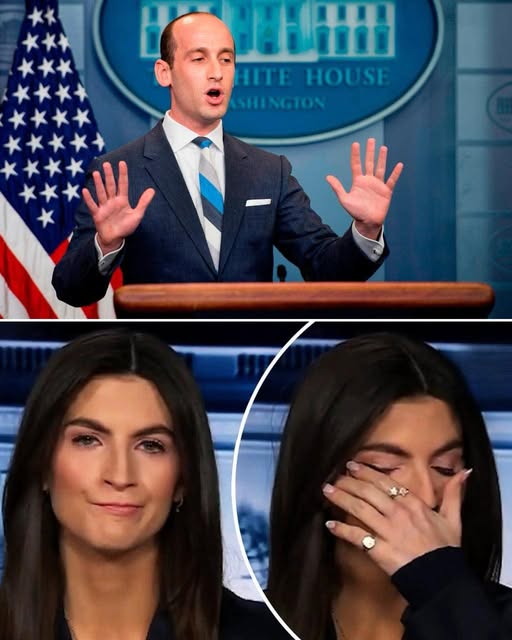In a dramatic and unexpected moment during a press briefing inside the Oval Office, Senior White House adviser Stephen Miller reportedly lost his composure and lashed out at CNN’s Kaitlan Collins. What began as a routine exchange quickly escalated into a tense and personal confrontation, stunning everyone present and igniting a wave of online debate.
The conflict was sparked when Collins questioned the administration’s handling of the recent deportation of Kilmar Abrego Garcia, a Salvadoran national. The deportation had already made headlines after the White House admitted it was the result of an “administrative error.” The mistake had caused diplomatic ripples, straining relations between the United States and El Salvador.
Collins pressed for clarity, asking whether the U.S. government was prepared to take responsibility for intervening in matters that directly affected El Salvador’s domestic affairs. Miller, visibly agitated, fired back with a biting tone. He accused Collins of arrogance and claimed that her questioning reflected the typical overreach of the American press. He insisted that the media had no right to scrutinize how other countries managed their own citizens, let alone suggest the U.S. should apologize for deporting someone.
Witnesses described the moment as “surprisingly hostile,” with Collins appearing caught off guard by the intensity of Miller’s retort. The room reportedly fell into a stunned silence after the exchange. What might have been just another policy discussion instantly became a symbol of the deepening tensions between the media and the current administration.
The altercation has since gone viral across social media, fueling broader conversations about the boundaries of press freedom, the tone of political discourse, and the transparency of those in power. Critics argue that Miller’s reaction was both unprofessional and emblematic of a growing pattern of aggression toward journalists. Supporters, however, claim he was simply standing up to what they perceive as biased and antagonistic reporting.
This incident underscores the increasingly fragile relationship between public officials and the press. It raises important questions about how government representatives should respond to accountability, especially when facing inquiries on sensitive international matters. More than just a clash between two personalities, it reflects a larger struggle over truth, responsibility, and the tone of public dialogue.
As the administration continues to face scrutiny over its immigration policies and diplomatic posture, moments like these are likely to shape public perception—not only of the policies themselves but of the people tasked with defending them. Whether this encounter leads to any real change in communication strategy remains to be seen, but one thing is clear: the eyes and ears of the public are paying close attention.
